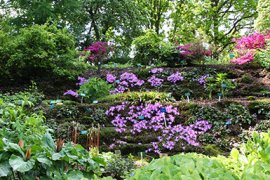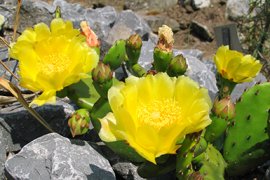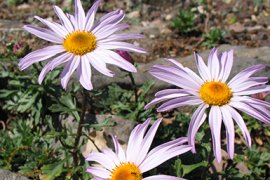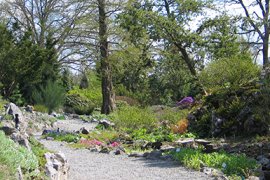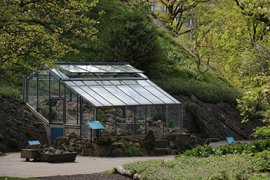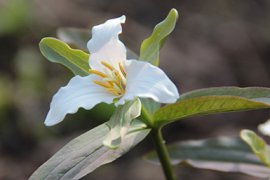Rock Garden
When entering the Botanic Gardens, the first thing you see is the Rock Garden. At its highest point, it is approximately 12 metres above the level of the fort moat. In terms of its wealth of different species and surface area, it is one of Europe's largest rock gardens.
Construction started on it in 1963, on top of the fort bunkers. Of course, the height difference of these bunkers proved particularly advantageous. However, 2,100 tonnes of rock still needed to be brought in from the Ardennes to create and 'dress' the Rock Garden. Because the stones suffer from occasional subsidence or part of the Rock Garden may need to be replanted, additional blocks of rock are regularly needed.
What is there to see?
In the Rock Garden, there are various biotopes, or plant habitats. To the left of the path leading to the fort, there are mainly special cultured varieties, rock plants grown especially for their double flowers or special leaf colouring.
On the large rock section on the left-hand bunker of the fort, the slopes are dry and sunny. There is also a damp ditch bank with various primrose (Primula) species, as well as a genuine mountain brook complete with waterfall. To the right of the path, there are peat terraces. Here, there are mainly species that thrive on the acid and damp substrate found in mountain forests, such as Trillium and Epimedium.
One special part of the Rock Garden is the Atlantic Bog, a piece of the ancient Netherlands. The southern marsh orchid (Dactylorhiza praetermissa) flowers here and you can also find sundew (Drosera) and cotton grass (Eriophorum angustifolium).


